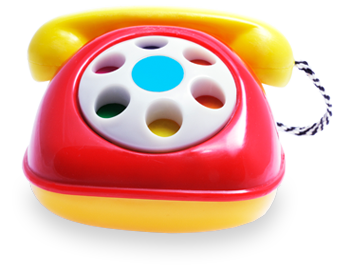Pediatric Stem Cell Transplant Process
Stem cell transplant -- also called bone marrow or cord blood transplant -- involves three phases: conditioning (preparing the body for the transplant), transplantation, and recovery. To keep your child as healthy as possible and to help manage any side effects from conditioning, your child will stay in the pediatric transplant and cellular therapy inpatient unit during this time.

Conditioning
Conditioning -- also known as cyto-reduction or preparative regimen -- will prepare your child's body for stem cell transplant. It usually begins the day after their central line is placed and lasts seven to 12 days. Conditioning may involve chemotherapy and sometimes radiation, depending on the underlying disease. Most of the time, conditioning is done on the inpatient unit, but in some cases, the first few days of treatment are given on an outpatient basis. The purpose of conditioning is to:
- Destroy unhealthy cells such as cancer cells
- Make room in the bone marrow for new cells to grow
- Suppress the immune system to reduce the risk for rejection of the transplanted cells
Chemotherapy
Your child may receive one or more chemotherapy drugs through their central line. The number and type depend upon your child's disease and their size. Our doctors and nurse coordinators will provide you with a detailed treatment plan and educational materials and will conduct multiple training sessions to teach you about all of your child’s medications and their side effects.
Radiation Treatment
Many patients with leukemia receive total body irradiation (TBI) in addition to chemotherapy. TBI is a painless procedure that uses high-energy radiation over the entire body to:
- Destroy any cancer cells in the body that were not eliminated with chemotherapy
- Suppress the immune system so that it will not reject the new cells
Each TBI treatment takes a few minutes and is typically given twice a day for several days in a row.
Side Effects
During conditioning, your child will experience a number of expected side effects. Our goal is to keep your child as comfortable as possible throughout the process. We provide treatments for nausea, headaches, pain, and any other issue. In the hospital, they will have frequent lab tests to monitor for side effects.
Learn about the child- and family-centered care offered at Duke Children's Hospital and Health Center.
Stem Cell Transplant
The stem cell transplant can take place one to three days after the completion of conditioning. Whether the source of stem cells is bone marrow, peripheral blood, or cord blood, the transplant process is similar. Infusion of stem cells is a painless procedure that takes place in your child's room. The stem cells are given through your child's central line.
Within minutes of the infusion, the stem cells migrate to the bone marrow. Once settled, they begin to grow normal bone marrow. This process -- called engraftment -- takes two to six weeks. You will know the bone marrow is growing again when your child’s white blood cell count steadily rises after being low for several days to weeks after transplant.
After your child’s stem cell infusion, they will remain in the hospital while they recover. We closely monitor for infections, signs of graft versus host disease (GvHD), low blood counts, and other side effects of conditioning and transplant. We strive to keep your child safe and comfortable so they can focus on life after stem cell transplant.
We are exploring the use of umbilical cord blood and umbilical cord tissue for treating children with acquired and genetic brain injuries and disorders such as autism and cerebral palsy.

Outpatient Care
After about four weeks, the transplanted stem cells begin producing new blood cells. By this time, your child should have more energy and will be taking fewer medications. You will meet with the discharge nurse and others to begin planning for life as an outpatient.
Staying Local
For about 100 to 180 days after transplant, your child will need to stay close to Duke Children's Hospital and Health Center. This ensures easy access to your transplant team should your child get a fever, have trouble with their central line, or experience any other health problems. After discharge, your child will visit the outpatient clinic for frequent checkups. Our lodging coordinator can arrange appropriate housing for you and your family.
Follow-Up Care
At first, you and your child will come to our outpatient clinic every day to assess their response to therapy. Gradually, these visits will become less frequent. When appointments are only required once a week, your team will start to plan for your return home. Follow-up visits will be scheduled at three, six, nine, and 12 months, then yearly. Your Duke transplant doctor will stay in close contact with your home care team and will always be available for advice.
Duke Children's Hospital & Health Center is proud to be nationally ranked in 10 pediatric specialties.
